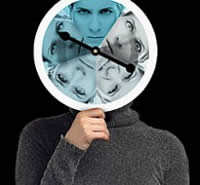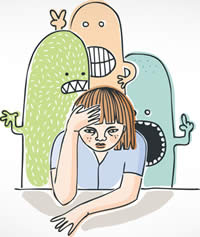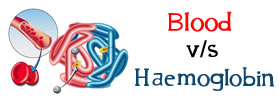Difference between Borderline and Schizoaffective Disorder
Key Difference: Borderline Personality Disorder is a mental condition in which people experience reckless and impulsive behavior, unstable moods and relationships. Schizoaffective Disorder is a mental condition in which a person exhibits a recurring abnormal mood and psychotic components.
Borderline Personality Disorder (BPD) and Schizoaffective Disorder are two medical conditions that affect a person’s cognition and emotion. These are two different types of mental disorders that can affect people and are considered to be dangerous if untreated. Patients suffering from either BPD or schizoaffective disorder become violent over a period of time. Many people can also suffer borderline personality disorder along with schizoaffective tendencies.
 Borderline Personality Disorder is a mental condition in which people experience reckless and impulsive behavior, unstable moods and relationships. The disorder was not considered as a medical condition until the 1980s, when the Diagnostic and Statistical Manual for Mental Disorders, Third Edition (DSM-III) listed this condition as a medical diagnosable illness. BPD patients usually suffer brief psychotic mood swings that often change in minutes or hours. Experts state that people suffering from BPD also often suffer from other mental disorders such as depression, anxiety disorders, substance abuse, eating disorder, suicidal behaviors, etc. The overlapping of these disorders makes it difficult to properly diagnose and treat the disease.
Borderline Personality Disorder is a mental condition in which people experience reckless and impulsive behavior, unstable moods and relationships. The disorder was not considered as a medical condition until the 1980s, when the Diagnostic and Statistical Manual for Mental Disorders, Third Edition (DSM-III) listed this condition as a medical diagnosable illness. BPD patients usually suffer brief psychotic mood swings that often change in minutes or hours. Experts state that people suffering from BPD also often suffer from other mental disorders such as depression, anxiety disorders, substance abuse, eating disorder, suicidal behaviors, etc. The overlapping of these disorders makes it difficult to properly diagnose and treat the disease.
According to research, BPD is known to occur three times more in women than in men. In women, the disorder is believed to co-occur with depression, anxiety and eating disorders. In men, it co-occurs with substance abuse and personality disorder. The disorder usually begins at a young age during adolescence or early childhood. Some childhood experiences have also been known to cause or trigger the disorder. Causes for the disorder include history of childhood trauma, brain abnormalities, genetic predisposition, neurobiological factors, environmental factors, executive function, family environment, self-complexity and thought suppression.
According to the DSM Fourth Edition, for a person to be diagnosed with BPD, they must exhibit at least five of the following symptoms: Extreme reactions of panic, depression, rage, etc., intense and stormy relationships, unstable self-image, impulsive and reckless behavior, suicidal tendencies, self-harming behavior, feelings of emptiness, uncontrollable anger and rage, paranoia, losing touch with reality, etc.
BPD has been unofficially divided into four subtypes by American psychologist, Theodore Million. He proposes that an individual diagnosed with the disorder can be classified into one oof the four categories depending on their symptoms. Wikipedia lists the four subtypes as:
- Discouraged borderline — including avoidant, depressive or dependent features
- Impulsive borderline – including histrionic or antisocial features
- Petulant borderline – including negativistic (passive-aggressive) features
- Self-destructive borderline – including depressive or masochistic features
Psychotherapy has been a proven to help treat patients with BPD. It has shown to help relieve some symptoms. Different types of therapy that are used include cognitive behavioral therapy, dialectical behavior therapy, and schema-focused therapy. Cognitive behavioral therapy (CBT) helps people identify and change core beliefs and behaviors that the patient may have about themselves along with addressing mood, anxiety problems and suicidal behaviors. Dialectical behavior therapy (DBT) focuses on helping the patient being aware and attentive to the present situation and allowing them to control and take charge of their emotions. Schema-focused therapy combines CBT with other forms of therapy and focuses on altering the way the patient views themselves. Medications are also used along with psychotherapy to relieve certain symptoms. Other treatments that have shown positive effect includes an omega-3 healthy diet for women.
 Schizoaffective Disorder is a mental condition in which a person exhibits a recurring abnormal mood and psychotic components. The disorder is constant and does not go away. The person may constantly happy and then depressed or they may be a mix of both happy and depressed at the same time. The disorder causes the patient to loss contact with reality and commonly affects the cognition and emotion. The disorder is known to occur commonly with bipolar or borderline personality disorder. The overlapping of the disorders makes the disorder a little difficult to treat and requires the patient to undergo constant treatment and medication. Schizoaffective Disorder is known to occur more commonly in women than in men.
Schizoaffective Disorder is a mental condition in which a person exhibits a recurring abnormal mood and psychotic components. The disorder is constant and does not go away. The person may constantly happy and then depressed or they may be a mix of both happy and depressed at the same time. The disorder causes the patient to loss contact with reality and commonly affects the cognition and emotion. The disorder is known to occur commonly with bipolar or borderline personality disorder. The overlapping of the disorders makes the disorder a little difficult to treat and requires the patient to undergo constant treatment and medication. Schizoaffective Disorder is known to occur more commonly in women than in men.
The exact cause of schizoaffective disorder is unknown. However, different research links the disorder to changes in genes and chemical in the brain. Other research has also been able to link abuse of substances such as marijuana and cannabis in the development and morbidity of psychotic disorders. PubMed Health lists the symptoms as:
- Changes in appetite and energy
- Disorganized speech that is not logical
- False beliefs (delusions), such as thinking someone is trying to harm you (paranoia) or thinking that special messages are hidden in common places (delusions of reference)
- Lack of concern with hygiene or grooming
- Mood that is either too good, or depressed or irritable
- Problems sleeping
- Problems with concentration
- Sadness or hopelessness
- Seeing or hearing things that aren't there (hallucinations)
- Social isolation
- Speaking so quickly that others cannot interrupt you
However, in order to be diagnosed with the condition, DSM criteria states that “there must be a period of at least two weeks of psychosis without mood disorder, and these symptoms cannot be due to medication(s), substance use or another medical condition.” The schizoaffective disorder must be treated as without treatment it could worsen and can even cause a person to commit suicide. Treatment for the condition includes a combination of medicine, psychotherapy and psychosocial rehabilitation focused on symptom management and recovery.
|
|
Borderline |
Schizoaffective Disorder |
|
Definition |
Borderline personality disorder is a condition during which a person exhibits unstable moods, behavior and relationships. They are also associated with reckless behavior and suicidal tendencies. |
Schizoaffective Disorder is a medical condition in which a person experiences recurring abnormal mood and psychotic components. |
|
Symptoms |
Extreme reactions, intense relationships, impulsive decisions and behavior, suicidal tendencies, extensive mood swings, feelings of emptiness, intensive and uncontrollable anger. |
Changes in appetite and energy, disorganized speech that is not logical, false beliefs (delusions), such as thinking someone is trying to harm you (paranoia) or thinking that special messages are hidden in common places, lack of concern with hygiene or grooming, mood that is either too good, or depressed or irritable, problems sleeping, problems with concentration, sadness or hopelessness, seeing or hearing things that aren't there (hallucinations), social isolation, speaking so quickly that others cannot interrupt you. |
|
Causes |
History of childhood trauma, brain abnormalities, genetic predisposition, neurobiological factors, environmental factors, executive function, family environment, self-complexity and thought suppression |
Most of the causes of this condition are unknown. However, abuse of marijuana and cannabis are being closely linked in the development and morbidity of psychotic disorders. |
|
Types |
BPD has been unofficially been divided into four types by Theodore Million: Discouraged borderline, Impulsive borderline, Petulant borderline and Self-destructive borderline. |
Bipolar type, Depressive type |
|
Treatment |
Psychotherapy, Medications, mental health services. |
Conventional treatment for schizoaffective disorder consists of a combination of medicine, psychotherapy and psychosocial rehabilitation focused on symptom management and recovery. Medications include antipsychotic antidepressant, mood stabilizer and benzodiazepines. |
Image Courtesy: about-health.org, lifeskillssouthflorida.com









Comments
Dez
Sat, 12/02/2017 - 06:41
A
Wed, 09/27/2017 - 01:00
Bren
Tue, 01/23/2018 - 02:12
Shadowmoo
Sun, 04/02/2017 - 04:37
this is a good article except for the claim that marijuana has any cause of this. That is absolutely ridiculous, marijuana is very well known and having a medicinal purposes including for mental illnesses. I think that is a very poorly misleading propaganda, but otherwise this is a good article.
Learning
Sun, 06/29/2014 - 22:43
Lulu
Fri, 07/22/2016 - 15:26
Zozo
Sun, 05/01/2016 - 09:49
SArah
Tue, 03/06/2018 - 11:58
Add new comment